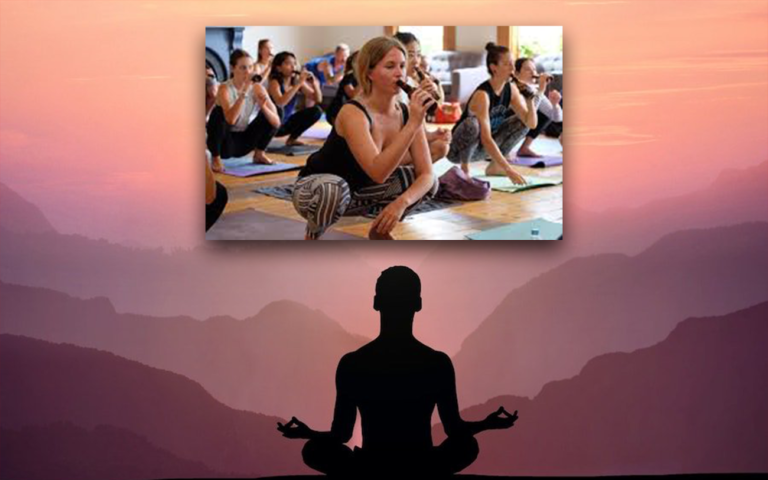As International Yoga Day is celebrated around the world on June 21, it’s hard not to think about the abuse of yoga. In Carmel, Indiana, one of the best cities to raise a family in the Midwest, life moves at a leisurely pace. Yoga studios are dotted around every corner, offering a sanctuary of peace and the promise of balance. But as I roll out my mat and join the chorus of deep breaths and flowing movements, a disturbing thought crosses my mind: Has yoga’s true essence been lost amid commercialization and Western reinterpretation?
Yoga is a practice with ancient roots in Hindu thought and philosophy that has transcended its origins to become a global phenomenon. The physical, mental and spiritual benefits of yoga attract millions, transforming lives and fostering a sense of community. In the United States alone, there are more than 35 million yoga practitioners across the religious spectrum. But as yoga has made its way from the holy lands of India to trendsetting studios in the West, its original essence has often been diluted or misused.
The commercialization of yoga, manifested in the proliferation of designer clothing, luxury retreats and celebrity endorsements, may make yoga more accessible and appealing to a wider audience, but at the same time, it runs the risk of reducing a profound spiritual practice to a mere fitness fad. Yoga’s core philosophy encompasses ethical living (yama and niyama), breath control (pranayama), meditation (dhyana) and the search for self-realization (samadhi), but it is often overshadowed by an exclusive focus on physical postures (asanas).
“Returning yoga to its roots” is not about excluding anyone from the practice of yoga, but rather it is a call to respect and preserve the authenticity of yoga.
This reductionist approach not only neglects the holistic nature of yoga, but also its rich cultural heritage. Appropriating Sanskrit terminology, symbols, and rituals without a deeper understanding and respect for their significance results in a superficial approach to yoga practice. It is not uncommon to find yoga instructors who have little or no knowledge of the philosophical pillars of yoga: Patanjali’s Yoga Sutras, the Bhagavad Gita, and the Upanishads.
“Bringing Yoga Back to Its Roots” This is not about excluding anyone from the practice of yoga. It is an invitation to recognize yoga as part of India’s cultural and spiritual heritage and to respect and preserve the authenticity of yoga. Here are some steps we can take to get back in touch with the true essence of yoga:
- Educate Yourself: Understanding the history, philosophy and cultural background of yoga is crucial. Reading key texts such as the Yoga Sutras and the Bhagavad Gita, and exploring the teachings of traditional gurus will give you deeper insight into the practice of yoga.
- Respecting traditionIt is natural for yoga practices to evolve, but it is important to respect traditions by using Sanskrit correctly, acknowledging the cultural origins of yoga, and avoiding the commercialization of sacred symbols and rituals.
- Holistic Practices: Embrace the eight pillars of yoga as proposed by Patanjali, which include physical postures as well as ethical guidelines, breathing exercises and meditation. This holistic approach will give you a deeper and more authentic experience.
- Supporting Real TeachersSeek out teachers who respect and understand the cultural and philosophical roots of yoga. Supporting such teachers helps to preserve the integrity of the yoga practice.
- Community and inclusionWe foster an inclusive yoga community that respects our diverse roots and encourages conversations about cultural appropriation and our work.
- We aim to create a space that respects the origins of the practice.
Yoga is India’s gift to the world, a practice that goes beyond physical exercise to touch the soul and spirit. By returning yoga to its roots, we can honour and preserve this ancient tradition and allow it to authentically thrive in our modern context. Roll out your mat with respect, breathe with intention, move with awareness and embrace the total transformational wonder of yoga.
JR Sandadi is a long-time resident of Carmel, Indiana. He immigrated to the US in the early 1990s and worked in IT for 25 years before retiring from corporate life. He volunteers with Hindu SwayamSevak Sangh (HSS, USA) and Sewa International USA. He also participates in several interfaith initiatives across Indiana and is one of the founding members of the Indiana Multi-Faith Network.



